The rock and gravel path seems to vanish as we approach the edge of the cliff. But we’re determined not to give up. So, tapping a few buttons on the center console , we press on – and over, the big SUV maintaining complete control all the way down.
A moment later, we come to an equally daunting challenge. The only way to continue is to climb up and over a slick wall of granite. It’s the sort of obstacle that might leave other vehicles stranded. But not the 2016 Range Rover Sport Td6. We point the noise, tap another button on the steering wheel and lift our feet off the pedals. Requiring only a little guidance on the steering wheel, the Range Rover begins its climb as confidently as a mountain goat.
The British SUV has long had a reputation as one of the most competent trailblazers you could find. The 2016 model takes things to an entirely new level. And with the addition of the first diesel powertrain bound for the U.S., the 2016 Range Rover Sport Td6 adds to the formula unexpectedly compelling fuel economy.
It’s been a decade since the Range Rover line introduced us to Hill Descent Control, a feature that has become all but commonplace today. It’s the electro-mechanical equivalent of Off-roading for Dummies. Switch it on and the car’s ABS system takes control as you head down the steepest of hills, maintaining a steady crawl all the way.
For 2016, the British maker has added a new feature, All Terrain Progress Control. Now, even a rank amateur can manage to climb, as well as descend, just about any hill with a wide enough trail. You use the cruise control button to set the desired speed, then simply point and steer your way up. You can override the system, should you wish, but otherwise, keeping your feet firmly planted on the plush carpet.
If anyone is likely to complain, it’s going to be the classic trail hawk who’ll label the new system entirely too easy. No problem. If you want to work that hard, simply shut it off.
The Progress Control system is one of several new features Land Rover is adding for 2016 on both the Range Rover and Range Rover Sport models.
(Land Rover betting big on its diesels in the U.S. market. Click Here for more.)
Equally welcome, at least for U.S. buyers, parent Land Rover is finally bringing a long-awaited diesel powertrain to the U.S. market. Available on both Range Rover and Range Rover Sport as a $1,500 option, the 3.0-liter turbodiesel is a no-compromise package for those who want great mileage and solid performance.
It turns out a solid 254-horsepower and a stump-pulling 440 pound-feet of torque, enough to tow a 7,700-pound trailer or launch from 0 to 60 in 7.1 seconds with the Sport, and 7.4 seconds in the bigger Range Rover. But the turbodiesel also delivers 32% better fuel economy than the gasoline V-6, at 22 mpg City, 29 Highway and 25 Combined.
What was especially impressive was that you’d not know you were driving a diesel if you didn’t check the Td6 badge or the Monroney sticker. It’s just that smooth running – and quiet, both inside the big SUV and out, with none of the ticking or clatter you expect with even the best oil-burners.
Other than the $1,500 premium – which the maker claims you can make up in fuel savings within a couple years – it’s hard to think of a single thing you’d call a compromise in ordering the new turbodiesel.
(Jaguar shows off its first crossover, the F Pace, ahead of Frankfurt debut. Click Here for more.)
Unlike some competitors, the two Range Rover models don’t pack on other features. The diesel is a standalone option. But, then again, even the base models are pretty well-equipped. And there are a number of new things to consider with the 2016 model-year.
The All Terrain Progress Control system is perhaps the most impressive, expanding the functionality of the familiar Hill Descent Control to automatically handle uphill, as well as downhill, grades. It’s an obvious plus for those who go off-roading, and even seasoned trail hands will appreciate how well it works. But it should also prove a plus for suburbanites who might have to deal with uneven terrain in inclement weather.
Other additions for 2016 include the Auto Access Height control which automatically lowers the SUVs when they park, for easier cabin access. The Range Rover and Range Rover Sport models now get a Gesture Tailgate that can open with the waggle of a foot, a particular convenience if you are, say, carrying an armful of groceries or antiques and can’t readily reach the remote keyfob or tailgate button.
The InControl infotainment system also can be upgraded this coming model-year. Among other things, there’s a new Remote and Protect service which adds such features as remote door unlocking and other security functions.
With the added features of the 2016 model-year, the Range Rover and Range Rover Sport models are two of the most competent and impressive luxury SUVs on the market. Where some competitors are content to make their big utes attractive, lavishly equipped and moderately capable off-road, the two British models are true, go-anywhere machines that carry you in style wherever you may go.
The new diesel option adds an attribute that one likely wouldn’t associate with a Range Rover: fuel-efficient. The Td6 package makes the two models all the more compelling.
(JLR skipping the U.S.; will set up new plant in Slovakia. Click Here for more.)

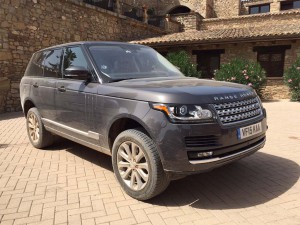
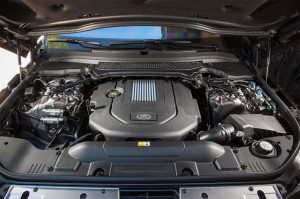
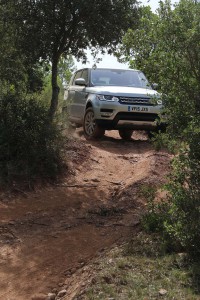
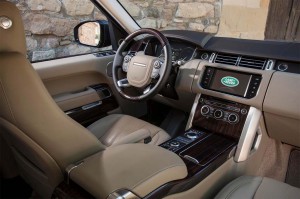
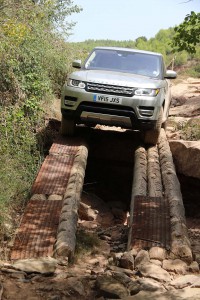
Unfortunately with OPEC screwing the world with higher Diesel prices than gasoline prices, it takes longer to recover the cost of a clean Diesel option. In many cases however especially for heavy vehicles, heavy loads or towing the torque from a Turbo Diesel is so superior and engine life so much better than on overstressed gas engine, that a consumer is lightyears ahead with the clean Diesel in addition to the superior fuel economy.
Obama and the EPA can got to Hell and they probably will for screwing over the U.S. populace when clean Diesel are used by the rest of the world for obvious reasons.